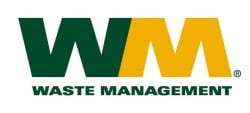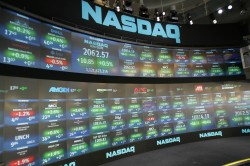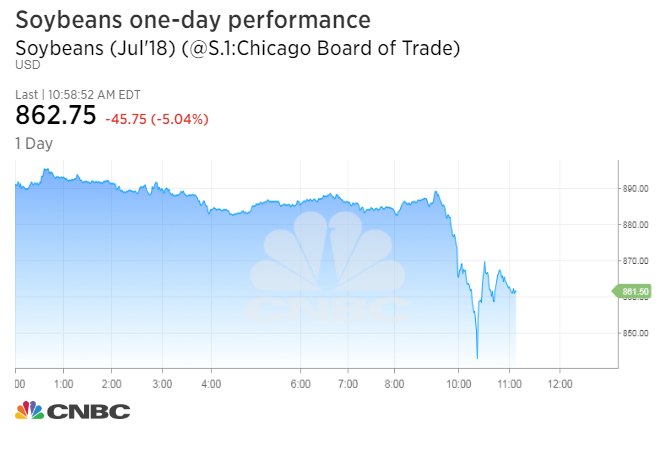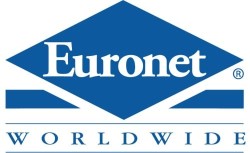&l;p&g;&l;img class=&q;size-full wp-image-787&q; src=&q;http://blogs-images.forbes.com/andrewrossow/files/2018/05/xeedaaaa.jpg?width=960&q; alt=&q;&q; data-height=&q;756&q; data-width=&q;750&q;&g; Xeeda&s;s &s;cold wallet&s; device which plugs directly into the user&s;s smartphone
If the blockchain space were to have a theme song, Katy Perry&a;rsquo;s &a;ldquo;&l;em&g;Hot N Cold&a;rdquo; &l;/em&g;song may just be the winner. In the world of &a;lsquo;hardware wallets&a;rsquo;, there are some very important features that need to be identified and explained to those investors breaking into the space.
&l;strong&g;Understanding Hardware Wallets&l;/strong&g;
With over 1,200 cryptocurrencies in existence, and growing, it is essential for investors and those breaking into the space to understand how to secure their digital currencies and investments properly.
The first question to ask is how you&a;rsquo;re going to store your funds. The answer is simple, so you think&a;mdash;you need a wallet or some platform to hold your funds. Sure. But what kind? Yes, there are variations as to the kind of wallet and why one may be favorable over another, depending upon the transaction you are engaging in.
Let&a;rsquo;s talk about the only wallets you need to know about&a;mdash;hardware wallets.
For those investors looking for long-term cryptocurrency storage, it is recommended to divide funds into &a;ldquo;hot&a;rdquo; and &a;ldquo;cold&a;rdquo; wallets. Many investors in the space who hold digital assets and currencies utilize both hot and cold wallets for different storage purposes.
&l;strong&g;Hot Wallets&l;/strong&g;
&a;ldquo;Hot wallets&a;rdquo; are &l;a href=&q;https://www.blockchain-council.org/cryptocurrency/hot-wallet-vs-cold-wallet/&q; target=&q;_blank&q;&g;comparable&l;/a&g; to your bank&a;rsquo;s checking account&a;mdash;where they are used for the everyday spending of cryptocurrencies, typically holding only small amounts of any fund(s). It&a;rsquo;s similar to the physical wallet we carry on us on a daily basis. The biggest feature to know about these types of wallets is that they are almost invariably connected to the Internet in order to be readily usable. You can see where this may cause concern when it comes to security and vulnerabilities.
&l;strong&g;Cold Wallets&l;/strong&g;
On the other hand, &a;ldquo;cold wallets&a;rdquo; are comparable to your average savings account, used for long-term secure storage of your cryptocurrencies, typically holding larger sums of monies that are not intended to be touched or used very frequently. Unlike hot wallets, cold wallets are not &l;em&g;actively &l;/em&g;connected to the Internet. By &l;em&g;actively&l;/em&g;, I mean that there may be some battery or Wi-Fi enabled feature that could allow it to connect to the internet.
For security purposes, it is &l;a href=&q;https://www.forbes.com/sites/rachelwolfson/2018/04/25/security-officials-weigh-in-on-protecting-cryptocurrencies-following-myetherwallet-hack/2/#7f68ec0f3424&q;&g;smarter&l;/a&g; to keep the majority of your assets in a cold wallet, while a smaller portion of your funds are kept in the hot wallet for purchasing and sales transactions. Why? A cold wallet makes it much more difficult for hackers to steal your funds, because it&a;rsquo;s not connected to the Internet, or any Wi-Fi enabled services.
While the current wallets out there are functional, they are still difficult to use, as many of the features leave the user exposed to hacking attempts. One company, &l;a href=&q;https://www.xeeda.io/&q; target=&q;_blank&q;&g;Xeeda&l;/a&g;, has had made it its mission to change the way in which users access their wallets and allowing for trading, exchanging, and other transactions that may come along.
&l;strong&g;If We Are On The Go, How Can We Take Our Wallets and Funds With Us?&l;/strong&g;
Moving past the structural aspects of the wallets, we next turn to security, convenience, and accessibility. When it comes to hardware wallets, there isn&a;rsquo;t a &l;em&g;truly mobile&l;/em&g; wallet out there that allows you to plug into your smartphone. Recognizing that it isn&a;rsquo;t the first on wallets, Xeeda is the first in developing a hardware wallet that connects directly to the smartphone,&a;rdquo; said Kevin Maloney, CEO of Xeeda. The &l;a href=&q;https://www.nasdaq.com/press-release/xeeda-partners-with-zencash-to-launch-worlds-first-cryptocurrency-hardware-wallet-designed-solely-20180404-00609&q; target=&q;_blank&q;&g;Nasdaq&l;/a&g; described Xeeda in a report as a simple, secure, and convenient way to access, exchange, and manage bitcoins and other digital currency assets directly from a smartphone.
Maloney told me that the company believes that three-quarters of the audience will benefit from having that mobile access because most of these folks are very comfortable with their mobile devices and are always on the go. &a;ldquo;They prefer to transact on the market, whether up or down, through the convenience of their mobile device,&a;rdquo; says Maloney.
Xeeda&a;rsquo;s Chief Revenue Officer, Scott Jackson, added that in an already established space, there is still an imbalance when it comes to ensuring compliance, security, and peace of mind for all users. &a;ldquo;Right now, there is a lack of a &l;em&g;truly&l;/em&g; mobile solution for a hardware wallet that is designed specifically for smartphones.&a;rdquo;
&l;em&g;Ensuring Compliance and Regulation&l;/em&g;
&a;ldquo;We aren&a;rsquo;t storing anyone&a;rsquo;s cryptocurrency, instead, we are storing their &l;em&g;personal access keys&l;/em&g;&a;mdash;the public and private keuys that allow them to access their funds in the blockchain.&a;rdquo; Having an ecosystem that provides a convenient solution with minimal retainment of personally identifiable information as well as financial information is vital especially in recent months following the Equifax and Facebook data breaches.
&l;em&g;How Does A &a;lsquo;Mobile&a;rsquo; Hardware Wallet Work&l;/em&g;
I was curious as to the structure of Xeeda&a;rsquo;s &a;lsquo;truly mobile wallet&a;rsquo;, as there is no AC adapter and no ethernet or wired cables. Maloney walked me through their structure:
&l;strong&g;#1 &a;ndash; It Needs To Be Truly Mobile&l;/strong&g;
As we learned earlier when it comes to hot and cold wallets, for a truly mobile solution, users need to understand that if they are using a cold wallet for offline storage, then that device shouldn&a;rsquo;t have any potential to connect to the Internet or any third-party servers or services.
In other words, you won&a;rsquo;t find a battery or Wi-Fi enabled means to connect the device to the Internet. Both Maloney and Jackson told me that their device has no such battery or means in which it can be connected to the internet, because &a;ldquo;it&a;rsquo;s just not necessary and defeats the entire purpose of mobility and security.&a;rdquo;
&l;strong&g;# 2&a;mdash;Plug N&a;rsquo; Pin&l;/strong&g;
Upon connecting the device directly into the smartphone, the application still needs to verify that the user is the intended user connecting. Thus, the need to create and/or enter a pin is required. Again, this is something the user would need to write down, offline, in the event they forget it.
&l;strong&g;#3 &a;ndash;Master Key&l;/strong&g;
Like all cryptowallets out there, the user is required to set up a &a;ldquo;master key&a;rdquo; or catchphrase. Xeeda calls it &a;lsquo;master seeds&a;rsquo;, or sets of randomly generated words, which the user must write down and store in a safe place, offline. Typically, this would be in a safe or jewelry box.
Once the master seed or key is generated, you don&a;rsquo;t really need that again unless you lose the device&a;mdash;while these devices are intended to be shockproof and waterproof, they aren&a;rsquo;t safe as against you losing your key. Thus, you can still access your funds in the blockchain as long as you have the master seed.
&l;strong&g;#4 &a;ndash;Authentication&l;/strong&g;
When it comes to a user plugging the device into the phone, there still needs to be a way to ensure that the person connecting it to the phone, is the holder of the funds. Thus, Xeeda allows for &l;a href=&q;http://pr.report/dRbLmhPN&q; target=&q;_blank&q;&g;biometric scanners&l;/a&g; and authentication, via facial recognition or fingerprint scanning. This allows the holder of the funds to make the mobile application accessible to them and only them, regardless of who plugs the device in.
&l;strong&g;#5 &a;ndash;Start Trading&l;/strong&g;
From the application, you are able to pull down any/all supported currencies, coins, altcoins that you have from your cold wallet/storage and transact small amounts by selling/exchanging goods, or putting them into your hot wallet, which is connected to the Internet through an app.
As users of digital currencies become more mainstream, businesses need to find new, innovative ways in which to provide convenient and secure mobile access to these currencies and their users across the globe.
Platforms need to offer ways in which users can toggle between exchanges, coins, and fee structures that they are most intrigued by. Xeeda has identified this major issue and is already acting on the solution, providing users with a new, yet secure experience in how they invest and trade.
&l;!--donotpaginate--&g;&l;/p&g;
 A ‘rolling bear market’ is already claiming victims, Mike Wilson goes into correction mode 18 Hours Ago | 04:57 Disclaimer
A ‘rolling bear market’ is already claiming victims, Mike Wilson goes into correction mode 18 Hours Ago | 04:57 Disclaimer
 Louisiana State Employees Retirement System lessened its holdings in Waste Management, Inc. (NYSE:WM) by 4.1% during the second quarter, according to its most recent 13F filing with the Securities & Exchange Commission. The fund owned 23,400 shares of the business services provider’s stock after selling 1,000 shares during the period. Louisiana State Employees Retirement System’s holdings in Waste Management were worth $1,903,000 at the end of the most recent reporting period.
Louisiana State Employees Retirement System lessened its holdings in Waste Management, Inc. (NYSE:WM) by 4.1% during the second quarter, according to its most recent 13F filing with the Securities & Exchange Commission. The fund owned 23,400 shares of the business services provider’s stock after selling 1,000 shares during the period. Louisiana State Employees Retirement System’s holdings in Waste Management were worth $1,903,000 at the end of the most recent reporting period.  Air Lease Corp (NYSE:AL) has earned a consensus recommendation of “Hold” from the twelve analysts that are covering the stock, MarketBeat.com reports. One research analyst has rated the stock with a sell recommendation, five have assigned a hold recommendation and six have given a buy recommendation to the company. The average 1 year target price among brokers that have covered the stock in the last year is $53.81.
Air Lease Corp (NYSE:AL) has earned a consensus recommendation of “Hold” from the twelve analysts that are covering the stock, MarketBeat.com reports. One research analyst has rated the stock with a sell recommendation, five have assigned a hold recommendation and six have given a buy recommendation to the company. The average 1 year target price among brokers that have covered the stock in the last year is $53.81.  PIMCO Income Opportunity Fund (NYSE:PKO) declared a monthly dividend on Monday, July 2nd, NASDAQ reports. Shareholders of record on Friday, July 13th will be given a dividend of 0.19 per share by the financial services provider on Wednesday, August 1st. This represents a $2.28 annualized dividend and a yield of 8.23%. The ex-dividend date is Thursday, July 12th.
PIMCO Income Opportunity Fund (NYSE:PKO) declared a monthly dividend on Monday, July 2nd, NASDAQ reports. Shareholders of record on Friday, July 13th will be given a dividend of 0.19 per share by the financial services provider on Wednesday, August 1st. This represents a $2.28 annualized dividend and a yield of 8.23%. The ex-dividend date is Thursday, July 12th. 



 Trinseo S.A., a materials company, manufactures and markets synthetic rubber, latex binders, and plastic products in Europe, the United States, the Asia Pacific, and internationally. The company operates through Latex Binders, Synthetic Rubber, Performance Plastics, Basic Plastics, Feedstocks, and Americas Styrenics segments. The Latex Binders segment offers styrene-butadiene, styrene-acrylate, vinylidene chloride, and butadiene-methacrylate latex products for the commercial and niche carpet markets, as well as performance latex products for the adhesive, building and construction, and technical textile paper markets. The Synthetic Rubber segment provides styrene-butadiene rubber, emulsion styrene-butadiene rubber, nickel polybutadiene rubber, and neodymium polybutadiene rubber for use in tires, modifiers, and technical rubber products. The Performance Plastics segment offers engineered compounds and blend products for the automotive, consumer electronics, medical, electrical, and lighting markets. The Basic Plastics segment provides polystyrene, polycarbonate, acrylonitrile-butadiene-styrene, and styrene-acrylonitrile for use in appliances, food packaging and food service disposables, consumer electronics, and building and construction materials. The Feedstocks segment offers styrene monomer, a basic building block of plastics. The Americas Styrenics segment provides styrene and polystyrene, as well as general purpose polystyrenes, high heat, high impact resin, and STYRON A-TECH polystyrene products. The company's products are also used in carpet and artificial turf backing, coated and specialty paper, and other markets. Trinseo S.A. was founded in 2010 and is headquartered in Berwyn, Pennsylvania.
Trinseo S.A., a materials company, manufactures and markets synthetic rubber, latex binders, and plastic products in Europe, the United States, the Asia Pacific, and internationally. The company operates through Latex Binders, Synthetic Rubber, Performance Plastics, Basic Plastics, Feedstocks, and Americas Styrenics segments. The Latex Binders segment offers styrene-butadiene, styrene-acrylate, vinylidene chloride, and butadiene-methacrylate latex products for the commercial and niche carpet markets, as well as performance latex products for the adhesive, building and construction, and technical textile paper markets. The Synthetic Rubber segment provides styrene-butadiene rubber, emulsion styrene-butadiene rubber, nickel polybutadiene rubber, and neodymium polybutadiene rubber for use in tires, modifiers, and technical rubber products. The Performance Plastics segment offers engineered compounds and blend products for the automotive, consumer electronics, medical, electrical, and lighting markets. The Basic Plastics segment provides polystyrene, polycarbonate, acrylonitrile-butadiene-styrene, and styrene-acrylonitrile for use in appliances, food packaging and food service disposables, consumer electronics, and building and construction materials. The Feedstocks segment offers styrene monomer, a basic building block of plastics. The Americas Styrenics segment provides styrene and polystyrene, as well as general purpose polystyrenes, high heat, high impact resin, and STYRON A-TECH polystyrene products. The company's products are also used in carpet and artificial turf backing, coated and specialty paper, and other markets. Trinseo S.A. was founded in 2010 and is headquartered in Berwyn, Pennsylvania. Rogers Corporation designs, develops, manufactures, and sells engineered materials and components worldwide. The company's Advanced Connectivity Solutions segment offers circuit materials and solutions for connectivity applications in wireless communications infrastructure, automotive, connected devices, wired infrastructure, consumer electronics, and aerospace/defense. Its Elastomeric Material Solutions segment provides elastomeric material solutions for critical cushioning, sealing, impact protection, and vibration management applications, including general industrial, portable electronics, consumer goods, automotive, mass transportation, construction, and printing applications. The company's Power Electronics Solutions segment offers ceramic substrate materials for power module applications, laminated bus bars for power inverter and high power interconnect applications, and micro-channel coolers. Its Other segment provides elastomeric components for applications in ground transportation, office equipment, consumer, and other markets; elastomer floats for level sensing in fuel tanks, motors, and storage tanks; and inverters for portable communications and automotive markets. The company also manufactures and sells polytetrafluoroethylene, ultra-high molecular weight polyethylene films, pressure sensitive tapes, and specialty products for the industrial, aerospace, automotive, and electronics markets. Rogers Corporation was founded in 1832 and is headquartered in Chandler, Arizona.
Rogers Corporation designs, develops, manufactures, and sells engineered materials and components worldwide. The company's Advanced Connectivity Solutions segment offers circuit materials and solutions for connectivity applications in wireless communications infrastructure, automotive, connected devices, wired infrastructure, consumer electronics, and aerospace/defense. Its Elastomeric Material Solutions segment provides elastomeric material solutions for critical cushioning, sealing, impact protection, and vibration management applications, including general industrial, portable electronics, consumer goods, automotive, mass transportation, construction, and printing applications. The company's Power Electronics Solutions segment offers ceramic substrate materials for power module applications, laminated bus bars for power inverter and high power interconnect applications, and micro-channel coolers. Its Other segment provides elastomeric components for applications in ground transportation, office equipment, consumer, and other markets; elastomer floats for level sensing in fuel tanks, motors, and storage tanks; and inverters for portable communications and automotive markets. The company also manufactures and sells polytetrafluoroethylene, ultra-high molecular weight polyethylene films, pressure sensitive tapes, and specialty products for the industrial, aerospace, automotive, and electronics markets. Rogers Corporation was founded in 1832 and is headquartered in Chandler, Arizona. Euronet Worldwide, Inc. provides payment and transaction processing and distribution solutions to financial institutions, retailers, service providers, and individual consumers worldwide. The company operates in three segments: Electronic Financial Transaction (EFT) Processing, epay, and Money Transfer. The EFT Processing segment provides electronic payment solutions, including automated teller machine (ATM) cash withdrawal and deposit services, ATM network participation, outsourced ATM and point-of-sale (POS) management solutions, credit and debit card outsourcing, card issuing, and merchant acquiring services. This segment also offers ATM and POS dynamic currency conversion, advertising, customer relationship management, mobile top-up, bill payment, fraud management, and foreign remittance payout services; and integrated EFT software solutions for electronic payments and transaction delivery systems. As of December 31, 2017, it operated a network of 37,133 ATMs; and approximately 248,000 EFT POS terminals. The epay segment provides distribution, processing, and collection services for prepaid mobile airtime and other electronic payment products; and vouchers and physical gift fulfillment, and gift card distribution and processing services. This segment operated a network of approximately 707,000 POS terminals. The Money Transfer segment provides consumer-to-consumer money transfer services primarily under the Ria, AFEX Money Express, and IME brands; account-to-account money transfer services under the HiFX and xe brands; customers bill payment services; payment alternatives, such as money orders and prepaid debit cards; check cashing services; foreign currency exchange and mobile top-up services; and cash management and foreign currency risk management services. The company was formerly known as Euronet Services, Inc. and changed its name to Euronet Worldwide, Inc. in August 2001. Euronet Worldwide, Inc. was founded in 1994 and is headquartered in Leawood, Kansas.
Euronet Worldwide, Inc. provides payment and transaction processing and distribution solutions to financial institutions, retailers, service providers, and individual consumers worldwide. The company operates in three segments: Electronic Financial Transaction (EFT) Processing, epay, and Money Transfer. The EFT Processing segment provides electronic payment solutions, including automated teller machine (ATM) cash withdrawal and deposit services, ATM network participation, outsourced ATM and point-of-sale (POS) management solutions, credit and debit card outsourcing, card issuing, and merchant acquiring services. This segment also offers ATM and POS dynamic currency conversion, advertising, customer relationship management, mobile top-up, bill payment, fraud management, and foreign remittance payout services; and integrated EFT software solutions for electronic payments and transaction delivery systems. As of December 31, 2017, it operated a network of 37,133 ATMs; and approximately 248,000 EFT POS terminals. The epay segment provides distribution, processing, and collection services for prepaid mobile airtime and other electronic payment products; and vouchers and physical gift fulfillment, and gift card distribution and processing services. This segment operated a network of approximately 707,000 POS terminals. The Money Transfer segment provides consumer-to-consumer money transfer services primarily under the Ria, AFEX Money Express, and IME brands; account-to-account money transfer services under the HiFX and xe brands; customers bill payment services; payment alternatives, such as money orders and prepaid debit cards; check cashing services; foreign currency exchange and mobile top-up services; and cash management and foreign currency risk management services. The company was formerly known as Euronet Services, Inc. and changed its name to Euronet Worldwide, Inc. in August 2001. Euronet Worldwide, Inc. was founded in 1994 and is headquartered in Leawood, Kansas. Payment Data Systems, Inc., together with its subsidiaries, provides integrated electronic payment processing services to merchants and businesses in the United States. The company offers various types of automated clearing house (ACH) processing; and credit, prepaid card, and debit card-based processing services. Its ACH processing services include Represented Check, a consumer non-sufficient funds check that is represented for payment electronically rather than through the paper check collection system; and Accounts Receivable Check Conversion, a consumer paper check payment, which is converted into an e-check. The company also offers merchant account services for the processing of card-based transactions through the VISA, MasterCard, American Express, Discover, and JCB networks, including online terminal services accessed through a Website or retail services accessed through a physical terminal. In addition, it provides a proprietary Web-based customer service application that allows companies to process one-time and recurring payments through e-checks or credit cards; and an interactive voice response telephone system to companies, which accept payments directly from consumers over the telephone using e-checks or credit cards. Further, the company creates, manages, and processes prepaid card programs for corporate clients to issue prepaid cards to their customer base or employees; and issues general purpose reloadable cards to consumers as an alternative to a traditional bank account. Additionally, it operates billx.com, a consumer Website that allows consumers to process online payments to pay other individual; and provides prepaid cards to consumers for use in as a tool to stay on budget, manage allowances, and share money with family and friends. The company markets and sells its products and services directly, as well as through non-exclusive resellers. Payment Data Systems, Inc. was founded in 1998 and is headquartered in San Antonio, Texas.
Payment Data Systems, Inc., together with its subsidiaries, provides integrated electronic payment processing services to merchants and businesses in the United States. The company offers various types of automated clearing house (ACH) processing; and credit, prepaid card, and debit card-based processing services. Its ACH processing services include Represented Check, a consumer non-sufficient funds check that is represented for payment electronically rather than through the paper check collection system; and Accounts Receivable Check Conversion, a consumer paper check payment, which is converted into an e-check. The company also offers merchant account services for the processing of card-based transactions through the VISA, MasterCard, American Express, Discover, and JCB networks, including online terminal services accessed through a Website or retail services accessed through a physical terminal. In addition, it provides a proprietary Web-based customer service application that allows companies to process one-time and recurring payments through e-checks or credit cards; and an interactive voice response telephone system to companies, which accept payments directly from consumers over the telephone using e-checks or credit cards. Further, the company creates, manages, and processes prepaid card programs for corporate clients to issue prepaid cards to their customer base or employees; and issues general purpose reloadable cards to consumers as an alternative to a traditional bank account. Additionally, it operates billx.com, a consumer Website that allows consumers to process online payments to pay other individual; and provides prepaid cards to consumers for use in as a tool to stay on budget, manage allowances, and share money with family and friends. The company markets and sells its products and services directly, as well as through non-exclusive resellers. Payment Data Systems, Inc. was founded in 1998 and is headquartered in San Antonio, Texas. Shares of Ashland Inc. (NYSE:ASH) hit a new 52-week high and low on Tuesday . The company traded as low as $79.68 and last traded at $78.99, with a volume of 15166 shares traded. The stock had previously closed at $78.71.
Shares of Ashland Inc. (NYSE:ASH) hit a new 52-week high and low on Tuesday . The company traded as low as $79.68 and last traded at $78.99, with a volume of 15166 shares traded. The stock had previously closed at $78.71. Tim Melvin
Tim Melvin …or a biotech company that could "change the world," even though the odds of successfully betting on a biotech firm hitting that jackpot are extremely small…
…or a biotech company that could "change the world," even though the odds of successfully betting on a biotech firm hitting that jackpot are extremely small…